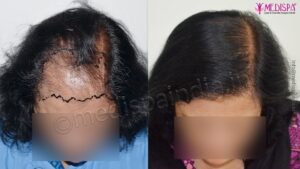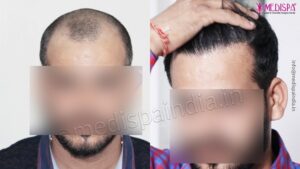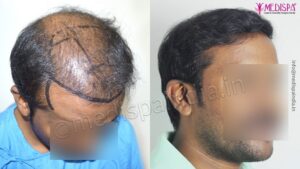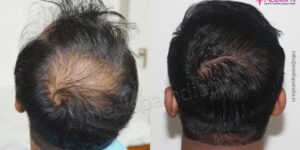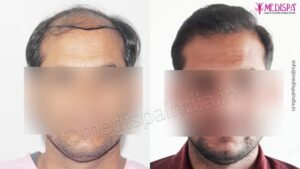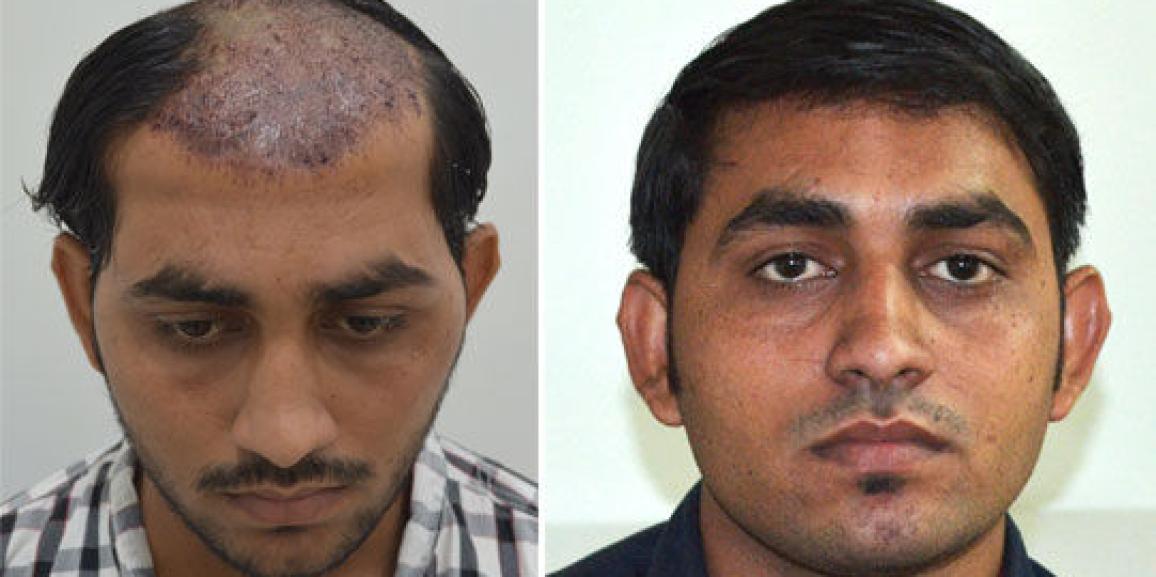
In order to fill up bald spots or areas with sparse hair on the scalp and in facial regions like the beard, moustache, and eyebrows, hair transplant surgeries are very popular hair loss treatment options. The hair transplant procedures are elective ones which are chosen by the patients and not an emergency procedure. The process entails taking hair transplants from the donor area and transplanting them to the recipient’s bald area.
The donor area is especially those parts of the body that have permanent hair roots, which are typically the sides and rear of the head or body hairs. In order to prove your eligibility for the hair transplant process, your body must have sufficient hair density of hair grafts.
The sequence of steps for hair transplant:
- Local anaesthetic is administered at the donor site and the intended bald spot
- Using the appropriate technique, extracting hair grafts from the appropriate donor location.
- The transplantation site’s slit preparation
- The hair follicular transplants are implanted.
- Follow-up care and counselling after surgery
Principles of hair transplant
The hairs that are DHT sensitive and are primarily found in the frontal area and the vertex area are involved in the hair loss caused by hereditary factors. A bald patch or a receding hairline in the vertex area are the first signs of hair loss. These bald spots overlap as the hair loss worsens to create a larger bald spot. A band of hair is left on the sides and back of the head at the advanced stage of this larger bald area.
The back and sides of the head’s hair follicles as well as other body hairs are employed in the transplanting procedure. These locations are chosen particularly because they have permanent hair roots and DHT-resistant hair follicles. These permanent hair roots are hand-selected since they exhibit donor dominance wherever they are implanted and endure for a very long time.
The idea underlying their persistence is that they are DHT resistant hair follicles that lack androgen receptors, which cause the hair follicles to become oversensitive and thin out and miniaturise.
The genetic makeup of hair grafts is contained in the roots themselves, which when transplanted anyplace exhibit donor dominance and behave according to the root’s own characteristics rather than those of the scalp.
Hair transplant techniques and their significance
Two main approaches are used in the hair transplant procedure, and they are fully described as follows:
- FUT or strip hair transplantation By removing a small section of the specified permanent root bearing donor area, FUT hair transplant is performed. To obtain individual hair transplants, this tiny strip is cut apart. With great care, these individual hair grafts are successfully implanted at the targeted bald spot. Because these tiny hair follicles can hardly be seen with the unaided eye, each stage is carried out under strong magnification. Trichophytic closure, a cutting-edge method for closing the donor site, enables healing to take place with almost undetectable scars.
- FUE hair transplant: To execute a FUE hair transplant, individual hair grafts are removed from the donor areas and then transplanted to the desired bald area. To ensure minimal scarring, each hair graft is removed using pulling power from a punch-like instrument at a wider distance.
Cost of hair transplant
The cost of a hair transplant in Jaipur can range from 70,000 to 400,000 INR, depending on a number of variables that are chosen during the initial consultation. A skilled hair transplant surgeon will do a thorough evaluation of the patient’s overall health at the initial consultation before deciding on key aspects of the procedure, including the price.
Although hair transplant cost in Jaipur is comparable to those in other major cities, the quality of the services is very high. People come to Jaipur for hair transplant treatments from all across the nation because of the excellent quality of the procedure. Many are drawn to the pink city by the promise of amazing results and the opportunity to undergo hair transplant surgery by internationally renowned specialists.
Risks associated with the hair transplant
The patient can resume work the day after the treatment without experiencing any physical aftereffects, and hair transplant procedures are not known to cause bodily harm. Within a few days of the treatment, the potential side effects are self-treatable and do not require any particular care. Below is a list of these adverse effects:
- Swelling
- Itching
- Mild pain
- Infections
- Scalp pimples

